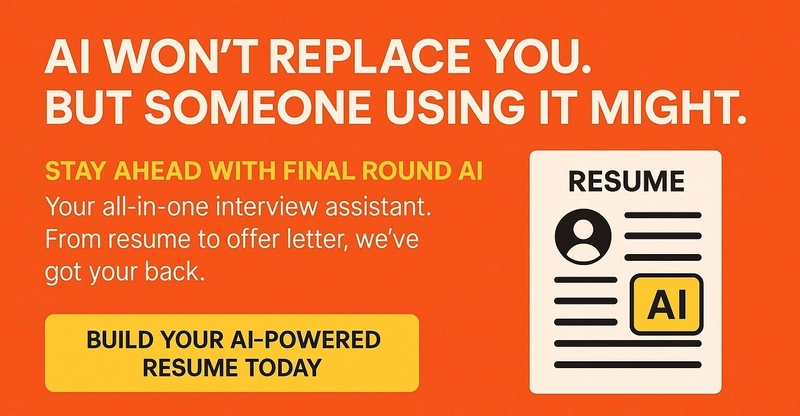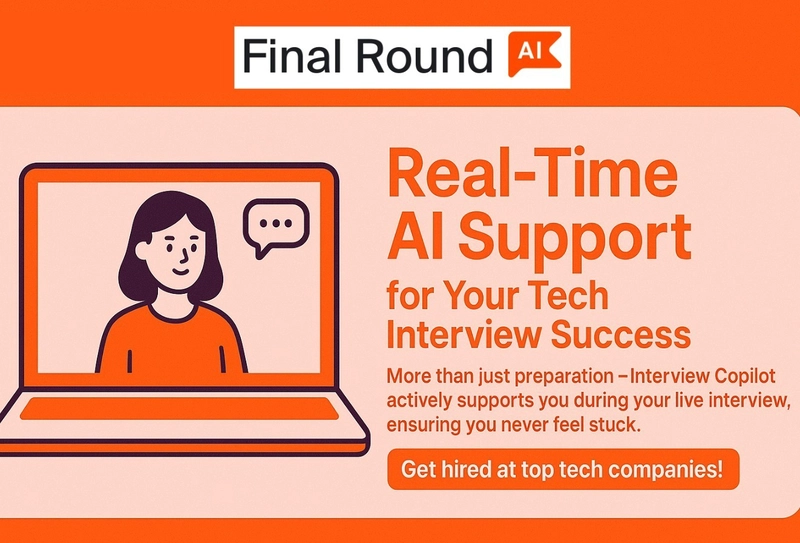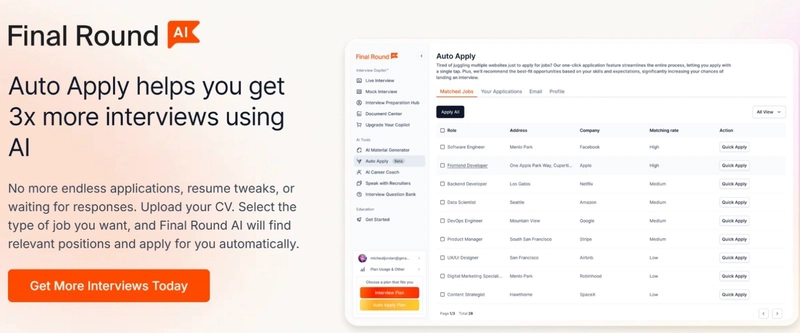System design interviews separate the good engineers from the great ones. 👨🏻💼 They test your ability to solve open-ended problems, design scalable systems, and make smart trade-offs, just like in real-world software architecture 🏗. In 2025, companies are prioritizing system thinkers who can balance reliability, performance, and maintainability.
Let’s dive in and sharpen your edge for your next big interview 🧗🏻♂️
40 System Design Interview Questions With Smart Answers
1. ❓ What is system design?
This foundational question tests your overall perspective on building complete systems. It shows how you think about structure, communication, and scale before diving into specifics.
Answer:
System design is the process of architecting the components, services, interfaces, and data flow of a system to meet functional and non-functional requirements like scalability, availability, and reliability.
2. ⚖️ What’s the difference between high-level and low-level system design?
Interviewers want to know if you understand the spectrum of design, from abstract architecture to specific implementation details.
Answer:
High-level design focuses on overall system components and their interactions, like choosing between a CDN and a load balancer. Low-level design dives into individual modules, class diagrams, and API details.
3. 🌐 What is scalability?
Scalability is a top concern in real-world systems. It shows whether your design can grow with the business.
Answer:
Scalability is the system’s ability to handle increased traffic, data, or users without sacrificing performance. It can be achieved through vertical or horizontal scaling.
4. 🧩 Monolithic vs Microservices?
Choosing the right architecture has long-term consequences. This question reveals how you evaluate trade-offs between simplicity and flexibility.
Answer:
Monolithic architecture bundles everything into one deployable unit, while microservices break it down into independent services. Microservices offer better scalability and agility but require more orchestration.
5. 📈 Vertical vs Horizontal Scaling?
It’s essential to know how a system can grow. Interviewers look for awareness of scaling techniques to avoid performance bottlenecks.
Answer:
Vertical scaling adds more power (CPU, RAM) to a single machine. Horizontal scaling adds more machines to distribute load. Horizontal scaling is more fault-tolerant and suited to large systems.

Try Final Round AI for FREE today! 🔥
6. 💽 What is a load balancer and why is it important?
Load balancers are key to high availability. This question checks whether you can distribute traffic efficiently and avoid single points of failure.
Answer:
A load balancer distributes incoming traffic across multiple servers, improving system availability, reliability, and response time.
7. 🔁 What is caching and how does it improve performance?
Caching can make or break performance. Interviewers want to know you can reduce database hits and latency with smart caching.
Answer:
Caching stores frequently accessed data in fast memory, reducing response times. It’s used in places like CDNs, databases, and application memory (e.g., Redis).
8. 🕸️ What is a CDN and when would you use it?
This tests your knowledge of global performance optimization.
Answer:
A CDN (Content Delivery Network) caches content like images, videos, and scripts across geographically distributed servers, reducing latency for users worldwide.
9. 🔧 What is a reverse proxy and how is it different from a forward proxy?
Proxies affect routing, security, and scalability. Understanding both types shows depth in infrastructure knowledge.
Answer:
A reverse proxy sits in front of servers and forwards client requests to them, often used for load balancing and SSL termination. A forward proxy sits in front of clients and sends their requests to the internet.
10. 📂 How would you design a URL shortening service like Bit.ly?
This problem tests your ability to handle ID generation, redirection logic, scalability, and analytics in a simplified system.
Answer:
To design a URL shortener:
- Generate a unique short hash using base62 or base64 encoding.
- Store the original URL and the generated hash in a database.
- Set up a redirect service to decode the hash and redirect users.
- Add expiration logic (optional).
- Use caching (e.g., Redis) for frequently accessed URLs to reduce DB hits.
11. 🤖 How would you design a web crawler like Googlebot?
This tests your ability to handle distributed workloads, prioritization, and large-scale data management.
Answer:
The system should manage a queue of URLs, fetch pages concurrently using workers, extract links, respect robots.txt, and store metadata in a scalable database.
12. 🛒 How would you design an e-commerce system?
It covers multiple subsystems, carts, payments, inventory, and more, testing your full-stack thinking.
Answer:
The system includes services for user management, product catalog, cart, order processing, and payment integration, all connected through APIs and backed by databases. Scalability, consistency, and transaction safety are key.
13. ✉️ How would you design a messaging system like WhatsApp?
Messaging requires low latency, delivery guarantees, and synchronization, ideal for testing your backend skills.
Answer:
Use WebSocket connections for real-time messaging, a message broker (like Kafka) for delivery, and store messages in a replicated database. Support offline messaging and user presence tracking.
14. 🎥 How would you design a video streaming platform like YouTube?
It combines storage, bandwidth, caching, encoding, and user interaction, an excellent large-scale challenge.
Answer:
Videos are uploaded, transcoded into various resolutions, stored in a distributed system, and served via CDN. Metadata and user interactions are handled in a separate database.
15. 🔍 How would you design a search engine?
Search systems demand indexing, ranking, and fast retrieval, showing your grasp of information retrieval.
Answer:
Crawl and index websites, tokenize content, store in an inverted index, and implement ranking algorithms like TF-IDF. The frontend takes a query, fetches ranked results, and displays them with pagination.
Try Final Round AI for FREE today! 🔥
16. 🎯 What is eventual consistency?
It’s critical in distributed systems where absolute consistency is often too expensive. Understanding it shows you're comfortable with modern database trade-offs.
Answer:
Eventual consistency means that all nodes in a distributed system will hold the same data eventually, but not instantly. It allows for better availability and partition tolerance.
17. 🛠️ How would you design a rate limiter?
Rate limiting prevents abuse and ensures fair usage. This question checks your knowledge of algorithm design and performance.
Answer:
- Choose an algorithm: Token Bucket, Leaky Bucket, or Fixed Window Counter.
- Store request count per user/IP in Redis or memory.
- Set a time window (e.g., 100 requests per minute).
- Reject or delay requests when limits are exceeded.
18. 🗂️ What is sharding in databases?
Sharding helps scale large datasets. Interviewers look for your ability to split and manage data effectively.
Answer:
Sharding divides a database into smaller chunks (shards), each hosted on a different server, based on a key like user ID. It improves read/write performance and distributes load.
19. 🔃 How would you design a system for real-time analytics?
This question tests your understanding of streaming data, ingestion pipelines, and real-time dashboards.
Answer:
Use a data ingestion layer (e.g., Kafka), real-time processing engine (e.g., Apache Flink or Spark Streaming), and a time-series database for storing results shown in a live dashboard.
20. 🧾 How would you ensure data consistency between microservices?
Consistency across services is tricky. This reveals whether you know techniques like sagas and idempotent operations.
Answer:
Use distributed transactions or the Saga pattern. Ensure all services produce and consume events reliably. Implement idempotency in operations to avoid duplication during retries.
21. ⏱️ What is latency vs throughput?
Clear understanding of performance metrics is key to system optimization.
Answer:
Latency is the time taken to process a single request, while throughput is the number of requests handled in a given time. Low latency improves responsiveness, high throughput improves capacity.
22. 📤 How would you design a notification system?
It tests event-driven architecture and multi-channel delivery logic.
Answer:
- Use an event queue (e.g., Kafka or RabbitMQ) to capture notification events.
- Create worker services to handle:
- SMS
- Push notifications
- Include retry mechanisms and delivery tracking.
- Support user preferences for channels and frequency.
23. 🔐 How would you design authentication and authorization?
Security is non-negotiable. This tests your knowledge of tokens, sessions, and user roles.
Answer:
Use OAuth2 or JWT for authentication. Store tokens securely. Implement role-based access control (RBAC) to manage what each user can access.
24. 🏠 How would you design a real estate listing platform like Zillow?
It includes search, filtering, media storage, and user interaction, a comprehensive test.
Answer:
- Services:
- User Service (authentication, profiles)
- Listing Service (CRUD listings)
- Media Service (upload/store photos/videos)
- Search Service (filters by location, price, etc.)
- Use:
- CDN for media
- Elasticsearch for search
- Notifications for saved searches
25. 📝 What is CAP theorem?
It defines the fundamental trade-offs in distributed systems.
Answer:
CAP theorem states that a distributed system can only guarantee two of the following three at a time: Consistency, Availability, and Partition Tolerance.
26. 📆 How would you design a calendar application like Google Calendar?
Managing recurring events, time zones, and real-time sync is complex.
Answer:
Use a calendar service to handle event logic, a time zone-aware scheduler, and WebSockets or polling for real-time updates. Store events with recurrence rules and sync changes with conflict resolution.
27. 🎨 How would you design an API rate monitoring dashboard?
This reveals how you manage metrics collection, alerting, and visualization.
Answer:
Collect metrics using agents or middleware. Store them in a time-series database. Display in a UI with alerts for threshold breaches.
28. 📸 How would you design an Instagram-like photo-sharing app?
Combines storage, feeds, scalability, and user engagement.
Answer:
Use microservices for user profiles, posts, likes, and comments. Store images in cloud storage or a CDN. Generate user feeds asynchronously for performance.
29. 🏎️ How would you design a ride-sharing system like Uber?
It’s a large-scale, real-time system. Great for testing GPS, matching algorithms, and fault tolerance.
Answer:
Track drivers with GPS updates, match users via geospatial queries. Handle dynamic pricing and trip history. Use queues for trip requests.
30. 🎧 How would you design a music streaming service like Spotify?
Streaming demands speed, caching, recommendations, and rights management.
Answer:
Stream audio from a CDN. Use metadata and machine learning for recommendations. Store user playlists, history, and track licensing info.
31. 🤼♂️ What trade-offs do you consider when choosing SQL vs NoSQL?
It shows your ability to match tools with use cases.
Answer:
SQL is great for structured data and complex queries. NoSQL excels with unstructured data, high write throughput, and schema flexibility.
32. 🗃️ How would you handle schema changes in production?
Downtime during migrations can be costly. This tests your release safety.
Answer:
Use backward-compatible migrations. Apply changes in steps: add new columns, migrate data, switch code, then remove old fields.
33. 🌍 How do you handle multi-region deployments?
Global availability adds complexity. You need to design for latency and failover.
Answer:
Replicate services and data across regions. Use geo-routing, region-aware load balancers, and eventual consistency where strict consistency isn’t critical.
34. 💬 What is a message queue and when would you use it?
Message queues decouple services and smooth traffic spikes.
Answer:
A message queue stores tasks for asynchronous processing. Use it when you want to decouple producers and consumers, like email sending or image processing.
35. 👀 How do you ensure observability in your system?
It shows your maturity in handling real-world production systems.
Answer:
- Implement:
- Logs: structured, centralized (e.g., ELK stack)
- Metrics: system-level and business metrics (e.g., Prometheus)
- Tracing: distributed tracing with tools like Jaeger or OpenTelemetry
- Use dashboards (Grafana) and alerts to monitor health and performance.
36. 🧮 What are some common bottlenecks in large-scale systems?
Bottlenecks cause failure. Spotting them early shows experience.
Answer:
Common bottlenecks include the database, network bandwidth, disk I/O, and synchronous dependencies between services.
37. 🧲 What’s the difference between push and pull architecture?
Knowing the right delivery model helps with user experience and performance.
Answer:
In a push model, the server initiates updates to clients (e.g., WebSockets). In a pull model, the client periodically requests updates. Push offers real-time data at the cost of complexity.
38. 🏗️ How do you test the scalability of a system?
Testing is how you validate assumptions. This shows you understand performance benchmarking.
Answer:
- Use tools like:
- Locust for load testing with Python
- Apache JMeter for UI-based testing
- Simulate various loads (concurrent users, burst traffic).
- Monitor:
- CPU, memory, disk I/O
- Latency and error rates
- Autoscaling response time
39. ⛓️ How would you handle circular dependencies between services?
Circular dependencies are a design smell. Avoiding them shows clarity in architecture.
Answer:
Break the cycle by decoupling shared logic into a separate service or using event-driven communication instead of synchronous calls.
40. 🧰 What tools do you use to draw and plan system designs?
Great diagrams help communicate architecture clearly.
Answer:
Tools like Excalidraw, Lucidchart, Draw.io, or Whimsical help create clean system diagrams to communicate flows and relationships.
🎉 Final Thoughts
System design interviews are no longer optional, they are essential. In 2025, recruiters want engineers who can think at scale, design for failure, and understand real-world trade-offs. Use this guide to sharpen your skills, understand the "why" behind each concept, and speak confidently in your interviews.
Remember: It’s not about having the “right” design, it’s about your reasoning and communication.
| Thanks for reading! 🙏🏻 Please follow Final Round AI for more 🧡 |
|---|







